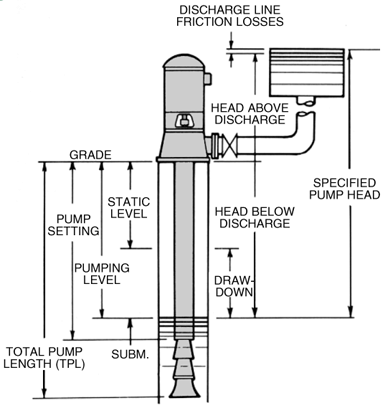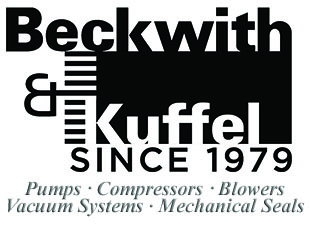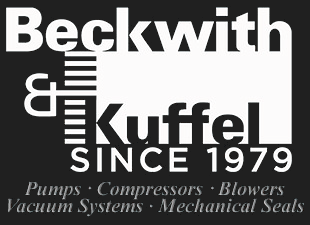2. STATIC LIQUID LEVEL - The vertical distance from grade to the liquid level when no liquid is being drawn from the well or source.
3. DRAWDOWN - The distance between the static liquid level and the liquid level when pumping at required capacity.
4. PUMPING LIQUID LEVEL - The vertical distance from grade to liquid level when pumping at rated cap-acity. Pumping liquid level equals static water level plus drawdown.
5. SETTING - The distance from grade to the top of the pump bowl assembly.
6. TPL (TOTAL PUMP LENGTH) - The distance from grade to lowest point of pump.
7. RATED PUMP HEAD - Lift below discharge plus head above discharge plus friction losses in discharge line. This is the head for which the customer is responsible and does not include any losses within the pump.
8. COLUMN AND DISCHARGE HEAD FRICTION LOSS - Head loss in the pump due to friction in the column assembly and discharge head. Friction loss is measured in feet and is dependent upon column size, shaft size, setting, and discharge head size. Values given in appropriate charts in Data Section.
9. BOWL HEAD - Total head which the pump bowl assembly will deliver at the rated capacity. This is curve performance.
10. BOWL EFFICIENCY- The efficiency of the bowl unit only. This value is read directly from the performance curve.

13. SHAFT FRICTION LOSS - The horsepower required to turn the lineshaft in the bearings. These values are given in appropriate table in Data Section.
14. PUMP BRAKE HORSEPOWER - Sum of 'bowl horsepower plus shaft loss (and the driver thrust bearing loss under certain conditions).
15. TOTAL PUMP EFFICIENCY (WATER TO WATER) -The efficiency of the complete pump less.the driver, with all pump losses taken into account.
17. SUBMERGENCE-Distance from liquid level to suction bell.


